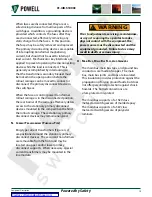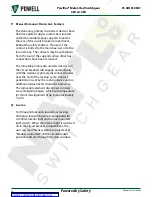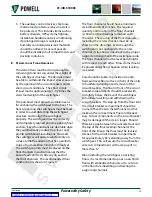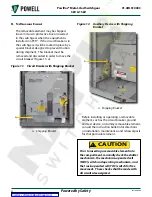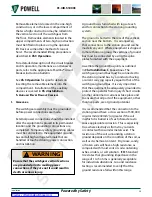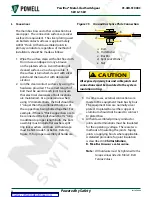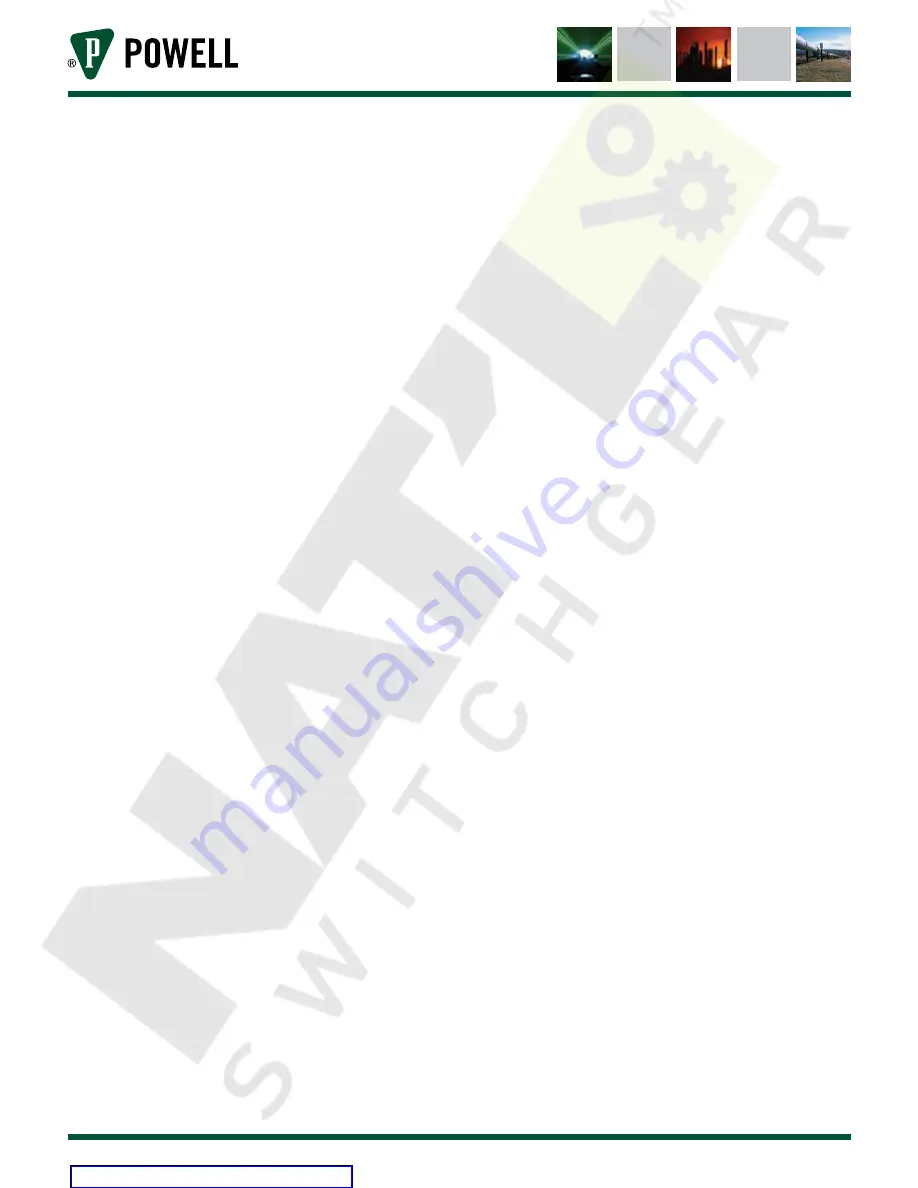
Powered by Safety
®
29
Installation
01.4IB.51000C
3) Applying Bus Insulating Boots
a. Prepare all joints as outlined in
b. Place the bus insulating boot over
the joint. The boot should fit snugly
around all conductors, and flanges must
contact each other in a smooth joint.
c. Secure the boot with the furnished
nylon wire ties to complete the joint
insulation.
Note:
The PVC insulation boots are
furnished for standard configurations.
Special configuration conditions may
require taped joints if bus insulating
boots are not available.
d. Replace all covers previously removed.
4) Incoming Power Connections
Incoming power connections to the
switchgear may be connected in
various configurations depending on
the equipment application. Review the
elevation drawings delivered with the
equipment for site specific connection
details.
5) Cleaning Bus Insulation
Main bus bars are insulated with a high
temperature thermoset material having
excellent dielectric and mechanical
properties. When cleaning is necessary,
use a lint-free cloth or industrial wiper, or
a vacuum cleaner to remove accumulated
dust and dirt. Do not clean the bus by
blowing with compressed air. Dust and
dirt removed in this manner may be blown
into operating parts of the switchgear and
damage bearings or other mechanisms.
If wiping or vacuuming does not clean
the bus adequately, only distilled water,
denatured alcohol or isopropyl alcohol
should be used to remove any foreign
materials from the insulation surface. The
use of other solvents may result in severe
damage to the insulation system or other
parts of the equipment.
l. p
rImAry
c
ABleS
Access the primary cable connections
in PowlVac® Metal-Clad Switchgear by
opening the hinged rear doors. Before any
primary cable connections are made, the
cables should be identified to indicate their
phase relationship with the switchgear
connections. This is necessary to ensure that
motors will rotate in the proper direction and
that the phase rotation is the same when
interconnecting two different sources of power.
Normally, compression terminals are used
to terminate primary cables. When shielded
cables are used, proper stress relief must be
provided at the cable termination. This may
be done by the use of a commercially available
cable terminator. In all cases, carefully follow
the cable manufacturer’s recommendations
for installation of the type of cable being used.
Normally, no insulation or stress relief materials
are furnished for cable terminations.
Potheads may be used when it is desirable to
hermetically seal the end of the cable to make a
moisture-proof connection between the cable
and switchgear bus. A pothead also prevents
seeping of oil from the end of oil impregnated
varnish cambric or paper insulated cable.

